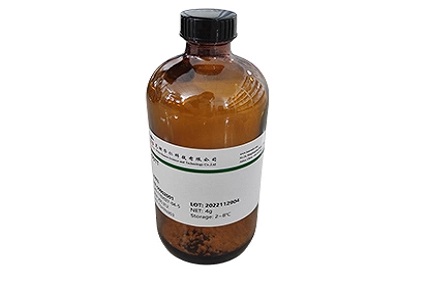RNA modifications have emerged as an important aspect of gene expression regulation and have been shown to play a critical role in RNA function, stability, and translation regulation. The modification of ribonucleosides is an opportunity to obtain diverse RNA sequences with tailored properties for distinct applications. 2'-O-methyl (2'-OMe) is one of the most commonly incorporated RNA modifications used to enhance RNA stability and binding affinity to complementary RNA sequences.
Synthesis of 2'-OMe-rG(ibu) Phosphoramidite
2'-OMe-rG(ibu) Phosphoramidite is synthesized using the H-phosphonate chemistry strategy. The synthesis involves the sequential activation of the 3'-hydroxyl group with a suitable activating group, followed by coupling to a protected nucleoside via the 5'-hydroxyl group. The modified ribonucleoside is then deprotected, and the 2'-OMe group is installed using 2'-O-methyl-ribonucleoside as a starting material.
1. Protection of the 3'-hydroxyl group: The synthesis of the 2'-OMe-rG(ibu) Phosphoramidite begins with the protection of the 3'-hydroxyl group of a ribonucleoside using a suitable protecting group. The common protecting groups used are dimethoxytrityl (DMT) or benzoyl (Bz) groups.
2. Activation of the 3'-hydroxyl group: The 3'-hydroxyl group is activated using a suitable activating agent to generate the corresponding phosphoramidite intermediate. Generally, 2-cyanoethyl-N,N,N',N'-tetraisopropylphosphorodiamidite (iPr2NEt-CN) or 2-chloro-2-oxo-1,3,2-oxaphosphoridine (1) is used as an activating agent.
3. Coupling to protected nucleoside: The activated phosphoramidite intermediate is reacted with a protected nucleoside under mild conditions to generate the phosphodiester linkage. The common protected nucleoside used for the synthesis of the 2'-OMe-rG(ibu) Phosphoramidite is N2-isobutyryl-2'-O-methylguanosine-3'-O-(2-cyanoethyl-N,N-diisopropylamino) phosphoramidite.
4. Deprotection: The protecting groups on the nucleoside are removed using suitable deprotection conditions to obtain the 2'-OMe-rG(ibu) nucleoside.
5. Installation of the 2'-OMe group: The 2'-OMe group is installed using 2'-O-methyl-ribonucleoside as a starting material, as described earlier. The final product obtained is 2'-OMe-rG(ibu) Phosphoramidite, which can be used for RNA synthesis.
Purification of 2'-OMe-rG(ibu) Phosphoramidite
The purity of Phosphoramidites used for RNA synthesis is critical for the production of high-quality RNA oligonucleotides. The purification of 2'-OMe-rG(ibu) phosphoramidite involves a series of chromatographic purification techniques to remove impurities and obtain a high-purity product.
1. Reverse-phase chromatography: The crude product obtained after synthesis is subjected to reverse-phase chromatography using C18 or C8 columns with a suitable eluent system to remove the impurities.
2. Ion-exchange chromatography: The reverse-phase-purified product is further purified using ion-exchange chromatography to remove any remaining impurities.
3. Size-exclusion chromatography: Finally, the product is subjected to size-exclusion chromatography to remove any residual reagents or byproducts and obtain a pure 2'-OMe-rG(ibu) Phosphoramidite.
In conclusion, the synthesis and purification of 2'-OMe-rG(ibu) Phosphoramidite involve a series of steps aimed at obtaining a high-quality product for RNA synthesis. The H-phosphonate chemistry method is a popular approach for the synthesis of phosphoramidites, and the purification involves a series of chromatographic techniques. The resulting product can be used for the synthesis of RNA oligonucleotides with tailored properties for diverse RNA applications.

 En
En Cn
Cn



